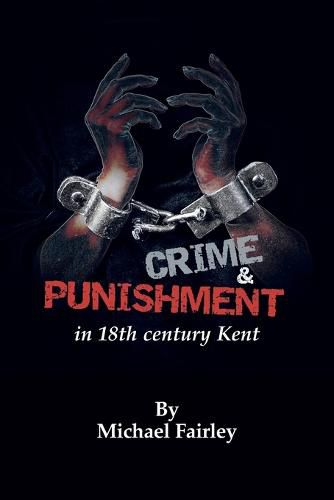Crime & Punishment in 18th century Kent
Michael Fairley

Crime & Punishment in 18th century Kent
Michael Fairley
Crime of all kinds was a growing problem in Kent, England, during much of the 1700s, whether this was local petty crimes (misdemeanours) such as stealing a loaf of bread, a few apples, a handkerchief, several pairs of stockings or a flat iron, right through to the much more serious crimes (felonies) that ranged from assault, housebreaking and property theft, highway robbery, horse and farm animal stealing, smuggling, poaching, pick-pocketing, manslaughter, poisoning and murder. The county's Quarter Sessions and Assizes courts at this time were overburdened with criminal trials and Parliament was desperate to deter any further rise in criminal activities. So much so, that towards the end of the 18th century there were more than 200 crimes in England and Wales that had become punishable by the death penalty which, in Kent, was quite extensively carried out at Penenden Heath, Maidstone, as well as outside Canterbury Gaol. Some 35,000 criminals were sentenced to death in England and Wales (many in Kent) in the 60 years between 1770 and 1830, although only about 20 per cent were actually executed. New Petty Sessions courts (frequently held in Kent's public houses) with local magistrates, were introduced in England and Wales in the 1730s to deal with the more minor county crimes, successfully reducing the burden on the county's high courts and, in turn, the burden on the country's most senior courts in London. Transportation of convicted criminals to, initially America, and then to Australia ? where more than 160,000 were eventually transported ? rose significantly, as well as the incarceration of thousands of convicts on prison hulks moored in the Thames and Medway. The range of punishments given in Kent's higher courts could be quire brutal and bloody. Apart from hanging, burning of women at the stake was still carried out in the 1700s, while both public and private whipping, standing in the pillory and branding (burning in the hand) were all commonly used punishments in the county. Research for this book has particularly involved extensive study of old Kent newspaper records from around 1730 onwards - reading the notices announcing court dates and justices, examining reports of crimes committed, convictions and punishments carried out ?? and digesting all this into a more convenient format for those interested in Kent crime and punishment in the 18th century. It was a brutal period in history
This item is not currently in-stock. It can be ordered online and is expected to ship in approx 2 weeks
Our stock data is updated periodically, and availability may change throughout the day for in-demand items. Please call the relevant shop for the most current stock information. Prices are subject to change without notice.
Sign in or become a Readings Member to add this title to a wishlist.


